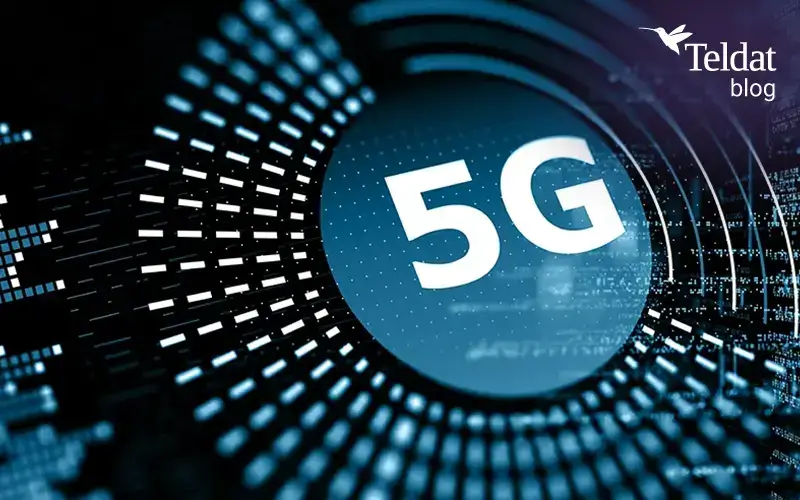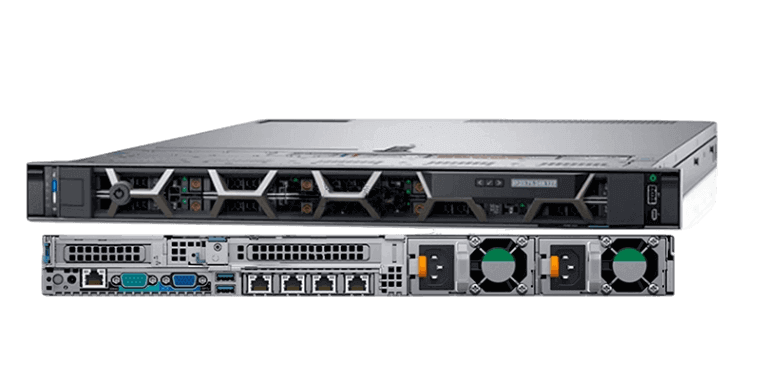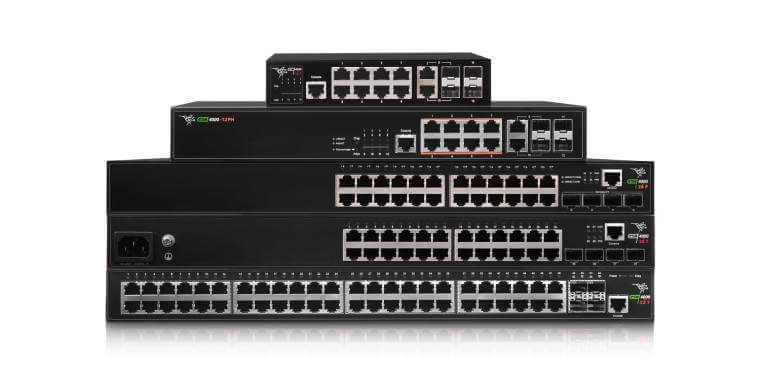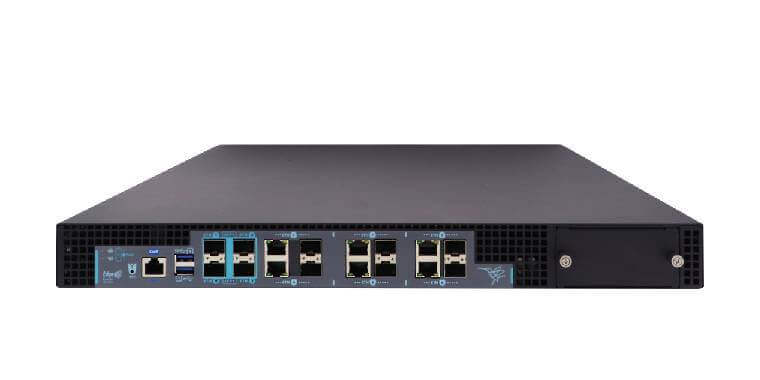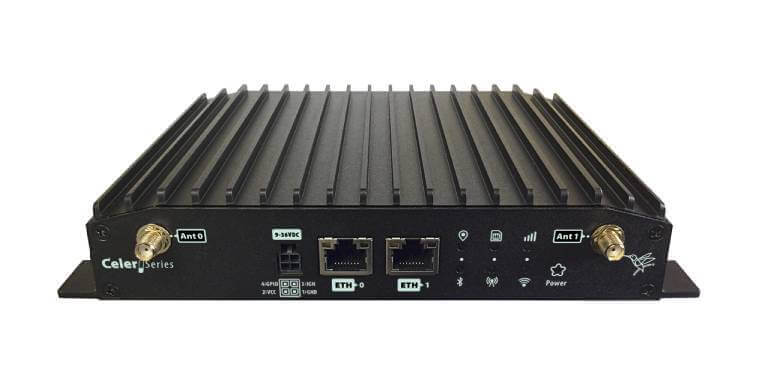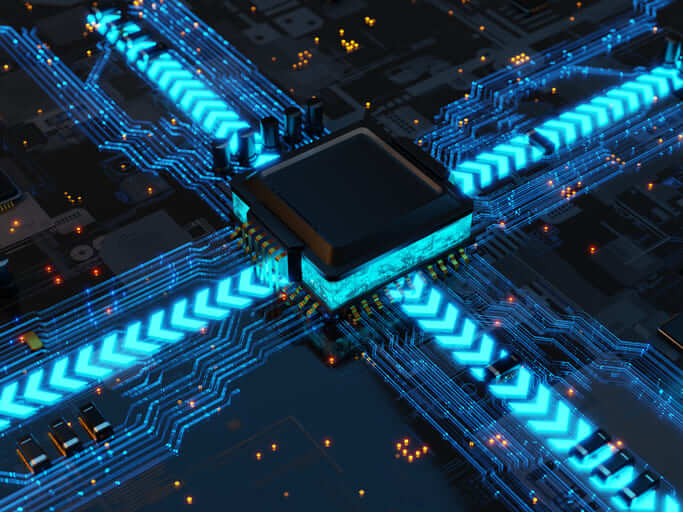The power of 5G Network Slicing
5G network slicing is the key to digital transformation that enables personalized connectivity, security, and service guarantees, transforming the way industries will operate and innovate in the next decade.
Slice your network, multiply your potential

Teldat is a leader in providing 5G connectivity solutions for the corporate segment and is highly focused on constant technological innovation, such as 5G virtual private networks, which offer customers a wide range of advantages:
- Unlock tailored connectivity delivering corporate customized network experiences.
- Premium SLA-backed services to customer enterprise. Boost efficiency & monetization.
- Accelerate innovation in next-gen applications such as smart factories, etc.
- Enhance security & isolated network environments for mission-critical operations.
- Simplify operations with automation and AI orchestration to dynamically manage slices.
Market Overview: Drivers, Size, Growth & the Future

5G Network Slicing allows multiple virtual networks to run on a single, shared physical 5G infrastructure. In the new 5G network slicing feature, several key players are promoting or claiming its necessity. On the one hand, technology providers such as Ericsson, Nokia, ZTE, and Samsung, as well as manufacturers of connecting devices. On the other, the service providers who will commercialize this feature. And finally, the customers who require it, primarily enterprises with specific use cases.
The network slicing market opportunity is valued at billions of dollars, with expected annual growth of over 40%. This growth is driven by the high demand for personalized connectivity, especially in sectors such as IoT, critical services, autonomous vehicles, and industrial automation, where service providers have an excellent opportunity to monetize the 5G network by offering Network as a Service (NaaS) to vertical sectors.
The digital transformation project across all manufacturers (Industry 4.0), healthcare, automotive, media, and logistics, is seeking advanced connectivity solutions that slicing uniquely offers. The bottom line is that 5G network slicing is the key to unlocking the full economic potential of 5G, transforming mobile network operators from utility providers to digital innovation enablers across all sectors. While technical and commercial challenges remain, the market momentum is undeniable, positioning network slicing as a central pillar of digital infrastructure for the next decade.
What are the important points related to 5G Network Slicing?

Support of diverse requirements
The same network runs High-Speed, Low-Latency in critical applications, Massive Connectivity for thousands of simple IoT sensors, and High Bandwidth networks. Without slicing, building separate networks would be prohibitively expensive and inefficient.

End-to-End Concept
A network slice spans every part of the network to guarantee performance. The RAN via the base stations and radios, the transport network with the links that connect everything, as well as the Core Networking handling data routing and authentication.

Security & Isolation
The logical isolation provides inherent security. For enterprise customers to trust their critical operations to a public network slice, they must have absolute confidence in their security and isolation. This is non-negotiable.

Dynamic & Scalable Infrastructure
Based on SDN and NFV, slices can be created, adjusted, or removed in real time as demand shifts. End-to-end orchestration is the biggest technical challenge and is essential for delivering on the promised SLAs.
Understanding 5G Network Slicing
5G Network slicing is a virtualization technology that allows a single physical 5G network to be partitioned into multiple independent, logical “slices.”Each slice is an end-to-end virtual network with dedicated resources and tailored performance characteristics to serve a specific purpose, application, or customer.
A network slicing solution isn’t a single piece of software; it’s a combination of technologies working together:
The Foundation
Network Functions Virtualization (NFV) replaces physical network appliances (like routers, firewalls) with software versions called Virtualized Network Functions (VNFs). These VNFs can be instantiated on-demand for each slice. Software-Defined Networking (SDN) separates the network’s control plane (the brain that decides how traffic is routed) from the data plane (the muscle that forwards traffic). This allows for centralized, programmable control of the entire network, making it easy to create and manage slice paths.
The Orchestration Layer
This is the intelligence of the solution. The orchestrator is a software platform that automates the entire process being made up of three basic areas which are explained below:
– CSMF (Communication Service Management Function): Translates a customer’s business need (e.g. the need for a low-latency slice for robot control) into technical requirements.
– NSMF (Network Slice Management Function): Designs the end-to-end slice based on those requirements, figuring out what resources are needed across the RAN, transport, and core.
– NSSMF (Network Slice Subnet Management Function): Commands the specific managers in each network domain (RAN, Core, Transport) to configure and reserve the actual resources.
This automated orchestration is what makes network slicing feasible at a scale.
End-to-End Isolation
A single slice is not just one thing; it spans the entire network with these components, the RAN, Transport and Core. Each are explained below:
– RAN Slice: Configures the radio access network to prioritize certain traffic, allocate spectrum, or manage scheduling for the slice.
– Transport Slice: Creates a virtual path through the network links with guaranteed bandwidth and low latency for the slice’s traffic.
– Core Slice: A dedicated, virtualized core network with its own set of VNFs (like a dedicated gateway and policy control) which is set up for this specific slice.
5G network slicing is not just a feature. It’s a comprehensive business and technical solution that for Network Operators, transforms their business model from selling connectivity to selling customized “Networks-as-a-Service” (NaaS). Whilst for enterprises and organizations, 5G networking slicing provides the performance and security of a private network, with the flexibility and economy of a public cloud. Technologically, 5G networking slicing relies on the convergence of Cloud, NFV, SDN, and Automation to become a reality. Indeed, itis the key that unlocks the full economic potential of 5G, enabling tailored connectivity for the diverse digital needs of modern society.

Teldat in 5G Network Slicing Ecosystem
The background
Teldat is a leading cybersecurity and telecommunications manufacturer with a strong focus on cybersecurity, communications, SD-WAN, and advanced routing for enterprise and organizations. It is important to understand that at Teldat we do not build the entire 5G slice.
Teldat’s strength lies in leveraging and integrating with 5G network slices at the customer premises and within the transport network. Our solutions are crucial for enterprises and organizations to reliably and securely connect to and use these slices. Teldat’s Core Value Proposition in 5G Slicing: We provide intelligent Customer-Premises Equipment (CPE) and software-defined networking solutions that allow businesses and organizations to:
1 – Connect to one or multiple 5G network slices reliably.
2 – Route application traffic intelligently into the correct slice based on business policy.
3 – Secure the connection from the enterprise edge to the network slice.
4 – Manage and monitor the performance of the slice from the user’s perspective.

How specific Teldat products fit into the 5G slicing architecture
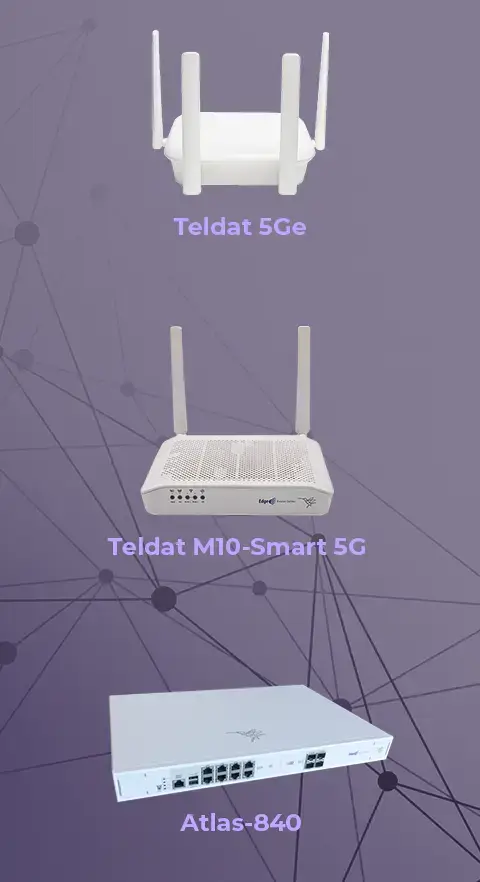
Compact 5G PoE+ IN router/gateway for high-quality backup or FWA services. It can be installed near locations with the best coverage without the need for complex cabling infrastructure. It’s the ideal solution for branch offices with cabinet routers that require 5G radio connectivity.
All-in-one-box secure SD-WAN edge device for all wireless services. It’s the ideal solution for branch offices because only one device includes LAN ports, copper/fiber WAN ports, dual radio AP Wi-fi 6 and 4G/5G certified connectivity.
Atlas-840 – 5G version in Roadmap
High-performance secure SD-WAN edge device, ready for major branch offices that demand not only data communication, but also secure services and XDR analytics running on 5G SA infrastructure.
With this product portfolio—especially our 5G edge routers and SD-WAN platform—Teldat ensures that businesses and organizations can practically, securely, and effectively leverage the power of 5G network slicing to meet their specific operational needs.
Use cases
Public Safety & Mission Critical Services
Slices can be created to ensure services remain operational during critical times.
Smart Manufacturing & Industry 4.0
One of the most prominent use cases for URLLC (Ultra-Reliable Low-Latency Communication) slicing.
Public Safety & Mission Critical Services
Slices can be created to ensure services remain operational during critical times
Challenge
This causes a lack of priority, in that there is no inherent mechanism to prioritize mission-critical traffic over public traffic. 112 calls can be dropped. Moreover insufficient reliability means standard networks cannot guarantee connections needed for applications from a firefighter’s helmet or real-time drone footage for situational awareness.
Solution

Why Teldat?
Smart Manufacturing & Industry 4.0
One of the most prominent use cases for URLLC (Ultra-Reliable Low-Latency Communication) slicing
Challenge
The rigidity of wired networks and the unreliability of Wi-Fi. The vision of Industry 4.0 involves flexible, reconfigurable production lines with autonomous mobile robots (AMRs), collaborative robots (cobots), and real-time machine monitoring. Traditional connectivity solutions struggle to support this for various reasons.
Firstly, wired networks offer high reliability but are incredibly inflexible. Moving a machine, robot, or adding a sensor requires rewiring. Wi-Fi provides wireless flexibility but is inherently unpredictable. It suffers from coverage holes, interference, and latency jitter, making it unsuitable for real-time control applications. Additionally, complex manufacturing environments have traffic with vastly different needs that hence causes lack of segmentation.
Solution

The Teldat M10-Smart 5G device offers wireless flexibility with wired-like performance, and key benefits of the flexible Slicing Solution.
Wireless Flexibility enables the reconfiguration of production lines and the free movement of AGVs/AMRs without any physical cable changes. Guaranteed Performance can be achieved with the URLLC slice via a deterministic latency and reliability that Wi-Fi capability cannot offer.
Also traffic isolation can be obtained so that critical traffic on the URLLC slice is completely isolated from video surveillance on the eMBB slice and sensor data on the mMTC slice. A problem in one domain cannot affect the others. This converged network is a single 5G network that replaces separate wired and wireless networks.
Why Teldat?
Media & Entertainment
This industry benefits massively from eMBB (enhanced Mobile Broadband) slicing in live event broadcasting and immersive experiences
Challenge
Physical Constraints are also apparent by running fiber optic or coaxial cables to every camera or mobile one, is logistically complex, expensive, and limits creative freedom. Yet multi-camera workflows in modern productions use dozens of wireless cameras and each requires a stable, high-bandwidth, low-latency connection.
Solution

The solution of the Atlas-840-5G with a private high-capacity broadcast network can be gained. 5G network slicing allows event organizers and broadcasters to create a dedicated, high-performance network overlay on the public infrastructure, exclusively for professional media use, because of various reasons.
Firstly, a Guaranteed High Bandwidth (eMBB) regardless of how congested the public network becomes. A consistent low latency enables engineered for minimal delay, which is critical for live broadcasting, real-time commentary, and coordinating feeds between cameras and the production studio. Also the media slice is logically separated by traffic isolation. A spectator’s social media upload has zero impact on the broadcast video.
Why Teldat?
Private 5G networks for companies, public sector and operators
The adoption of a private 5G network has become a strategic pillar for companies, public institutions, and operators seeking secure, high-performance communication infrastructures under their full control. Unlike public networks, a private 5G network combines the...
5G Red Cap: The Future of IoT Connectivity
The advent of 5G technology has transformed the world of wireless communications, promising unprecedented speeds, low latency, and the ability to connect numerous devices simultaneously. However, not all IoT applications require the full spectrum of 5G capabilities....
5G Networks – Cybersecurity Solutions and Threats
The arrival of 5G networks is set to shake up global connectivity, delivering unprecedented speeds, the ability to connect a vast number of devices, and ultra-low latency. However, this new technology also introduces a series of cybersecurity challenges. This blog...









